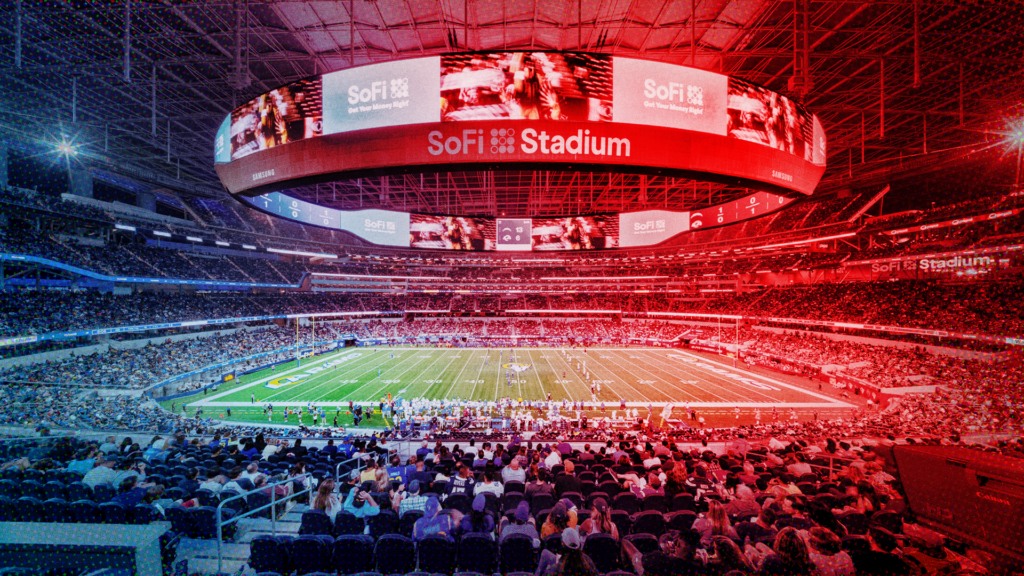The NFL’s audience has changed significantly over the past few years: it’s more diverse, female, and affluent. That means brand marketers seeking to reach audiences with complex content consumption patterns may find new opportunities for engagement with NFL influencers.
The NFL Brand Opportunity: Caution, Strategy, And Results
While NFL influencers play a vital role in driving sponsorship revenue for NFL teams, they also power deep brand-consumer connections that are challenging to achieve through other means. They leverage their powerful social networks to accelerate brand awareness and drive engagement among niche and hard-to-reach audiences. For example, per a report by SponsorUnited, The Miami Dolphins’ Tyreek Hill, averaged 183k likes, shares, or comments per post and generated the most engaged branded post on the list, with 3.4 million likes.
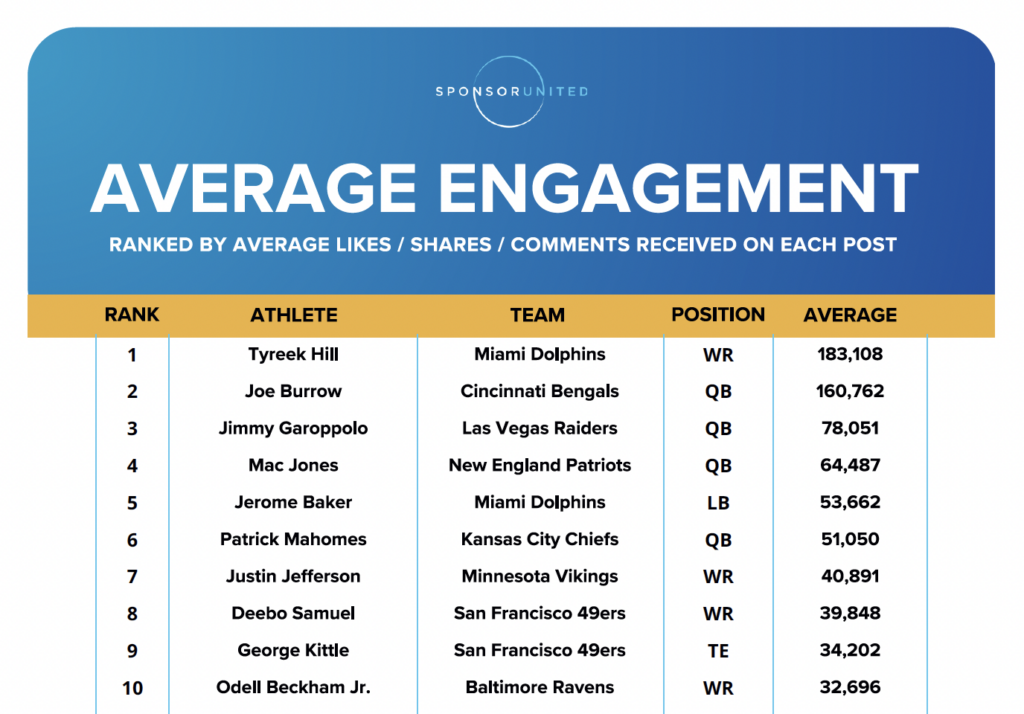
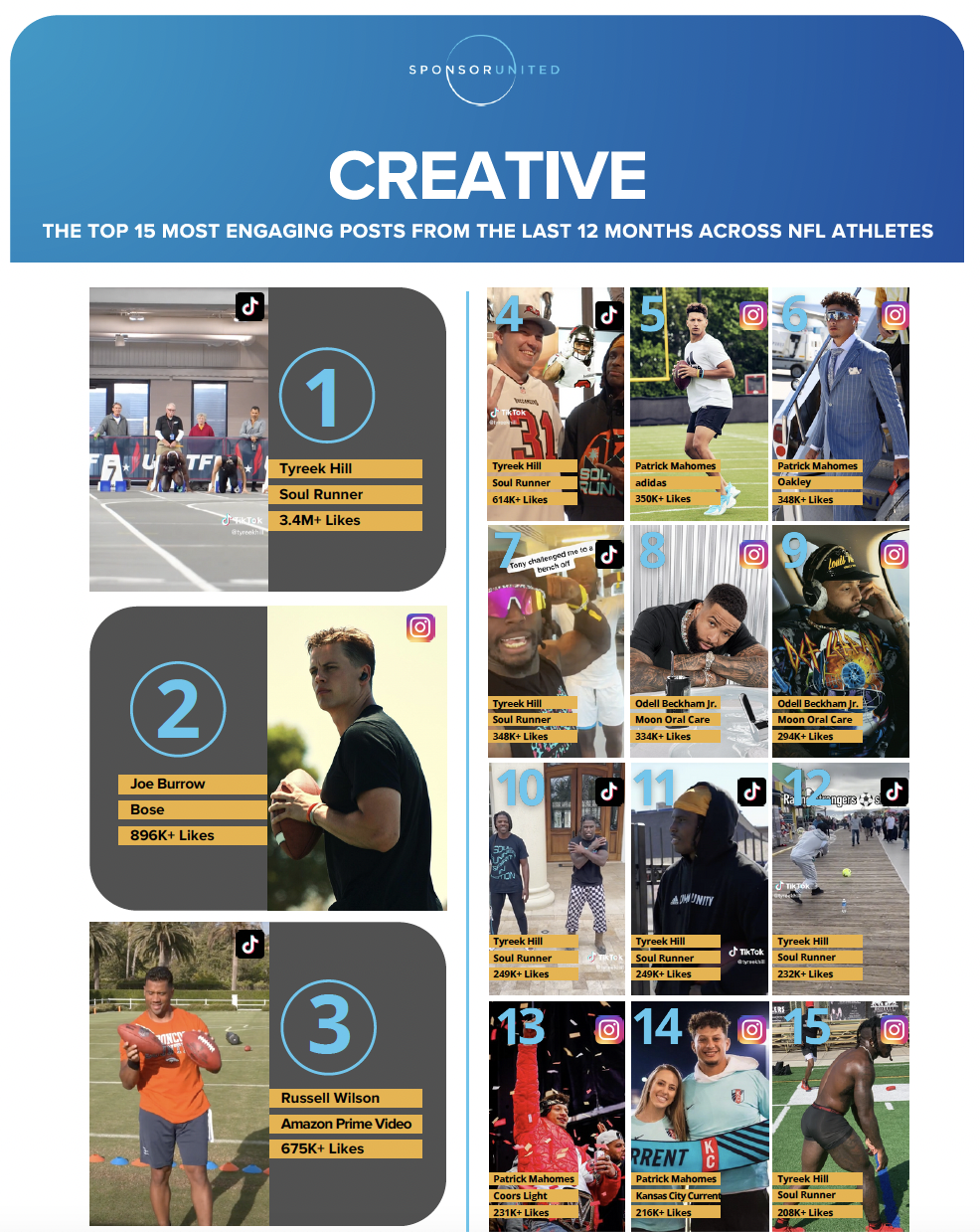
That influence is driving brands to connect with highly social NFL players as they attempt to leverage their networks and their power to reach new audiences.
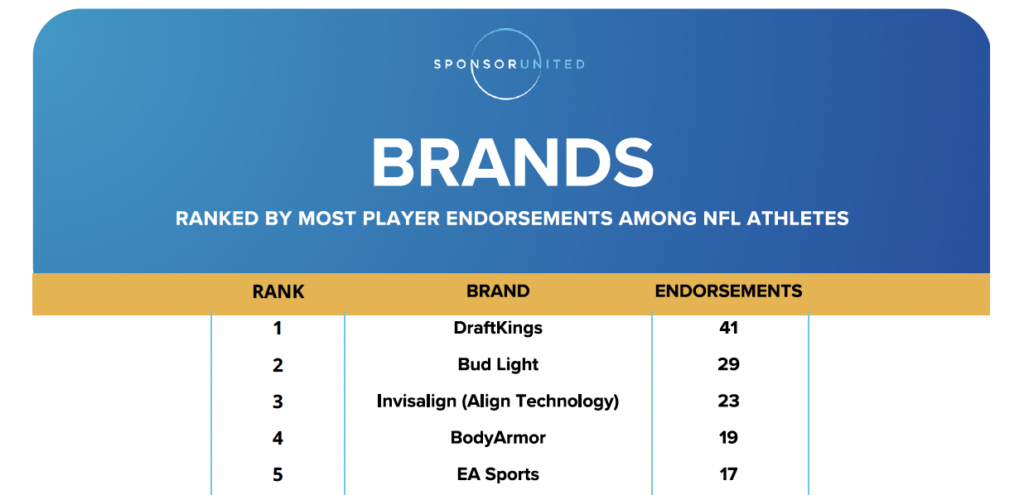
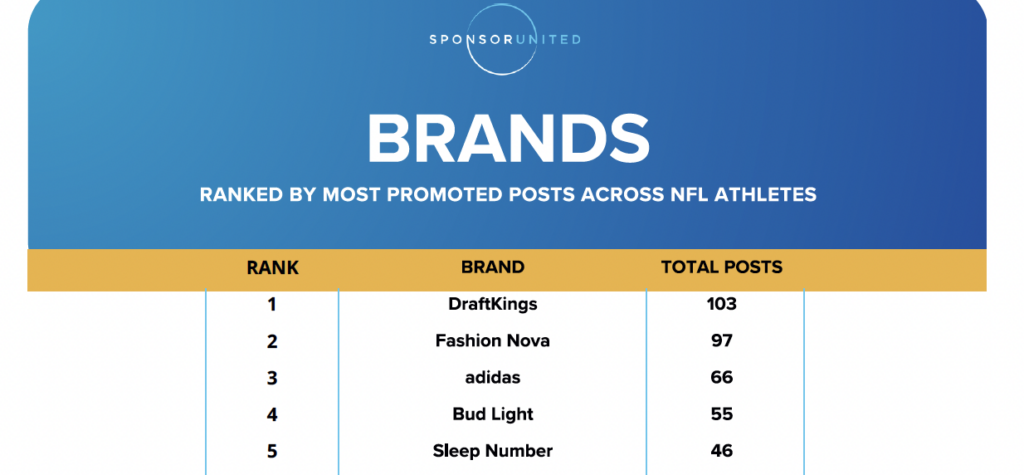
However, as any marketer knows, brand partnerships can be risky—and high-profile campaigns can implode when personalities (or the brand itself) suffer a brand or PR misstep. That’s why influencer partnerships are often seen as a safer middle-ground for brands seeking to leverage star power via an endorsement without building an expensive ad campaign around a single personality.
That’s important, as NFL viewers are not the same as in Madden’s glory days. For instance, according to Sponsor Pulse, 70 percent of NFL-engaged audiences earn over $100k per year, and 64 percent are under 39, and 58 percent engage with NFL-related content weekly.
Today’s audiences are also more diverse and engaged on social channels that allow them to share their thoughts in real-time—making brand or social content fails (or successes) instantly viral.
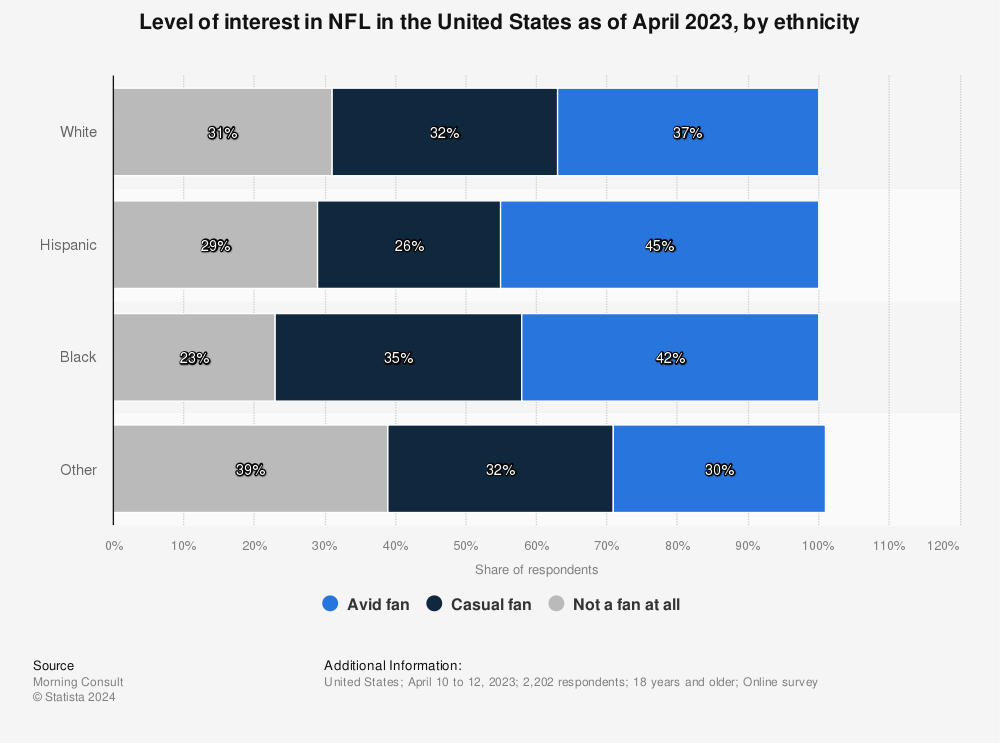
Find more statistics at Statista
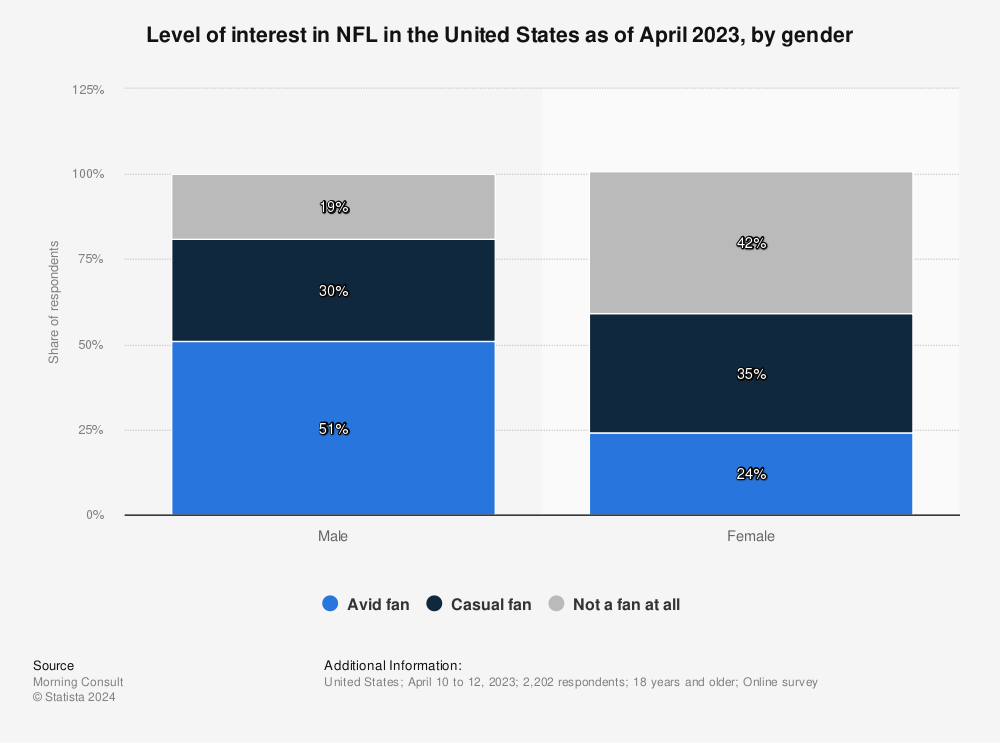
Find more statistics at Statista
Results can be powerful for brands, per Nielsen’s global study of football fans:
- Eighty percent of viewers browse social media during games
- Fifty-nine percent of football fans stated that sponsorship or endorsement would drive their selection of one product over another (if quality and price were the same)
The Takeaway:
While Nielsen’s study was global in focus, it tracks with how NFL fans engage with branded content and social media while viewing a game. According to a 2022 survey, sixty-nine percent of NFL viewers use a second screen after seeing an ad to find more information on a product or service that interests them. But those “ads” can also be social media mentions—or content delivered via a social platform, where NFL fans are already engaging during a game. That means brand marketers with an ad or a powerful influencer relationship can leverage that interest to drive conversions—simply by being present on social, even in the absence of an ad placement.
